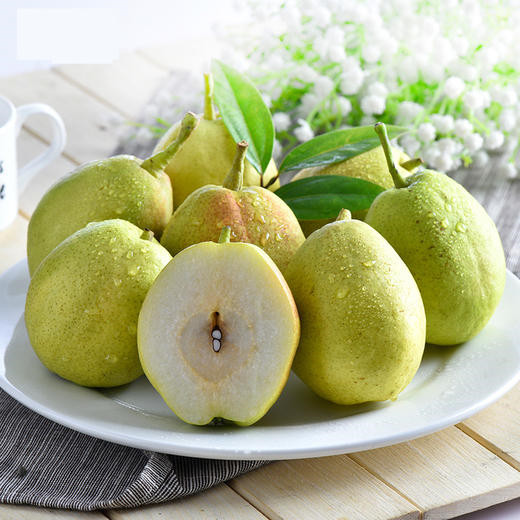When it comes to healthy snacking, pears are a popular choice. Not only are they delicious and versatile, but they also offer a range of nutritional benefits. One important aspect of assessing a food's nutritional value is understanding its calorie content. In this article, we will delve into the topic of calories in one pear and shed light on the overall nutritional profile of this juicy fruit.
Understanding Calories in One Pear:
On average, a medium-sized pear contains approximately 100 calories. This calorie count can vary slightly depending on the size and variety of the pear. However, it is important to note that the calorie content of a pear is relatively low compared to other snacks, making it a smart choice for those seeking a healthy, low-calorie option.
Fiber Content:
In addition to being low in calories, pears are also rich in dietary fiber. A medium-sized pear provides around 6 grams of fiber, which is about 24% of the recommended daily intake. The fiber in pears not only promotes digestive health but also helps to regulate blood sugar levels and maintain a feeling of fullness, making them an excellent choice for those watching their calorie intake.

Vitamins and Minerals:
Pears are packed with essential vitamins and minerals that contribute to overall health and well-being. They are a good source of vitamin C, providing about 12% of the recommended daily intake. Vitamin C is known for its antioxidant properties and its role in supporting immune function. Pears also contain small amounts of other vitamins, including vitamin K and several B vitamins.
When it comes to minerals, pears contain potassium, which is vital for maintaining proper heart function and regulating blood pressure. Additionally, pears contain smaller amounts of calcium, magnesium, and iron, which all play important roles in various bodily functions.
Health Benefits of Pears:
Apart from being low in calories and rich in fiber, pears offer several other health benefits. Their high water content helps to keep the body hydrated, while their natural sugars provide a source of energy. Pears also contain antioxidants, such as flavonoids and carotenoids, which help to protect the body against cellular damage caused by free radicals.
Furthermore, the fiber content in pears supports healthy digestion, aids in weight management, and may help reduce the risk of certain chronic conditions, such as heart disease and type 2 diabetes.
Incorporating Pears into Your Diet:
With their sweet and juicy flavor, pears can be enjoyed in various ways. They can be eaten fresh as a snack or added to salads, smoothies, or oatmeal for an extra burst of flavor and nutrition. Pears can also be baked, poached, or grilled, creating delicious desserts or accompaniments to savory dishes.
When it comes to counting calories, pears are a fantastic option. With their relatively low calorie content, high fiber content, and array of essential vitamins and minerals, pears provide a satisfying and nutritious snack. Incorporating pears into your diet can support your overall health and well-being while indulging your taste buds with their delightful flavor. So, next time you reach for a snack, consider the wholesome goodness of a juicy pear.
